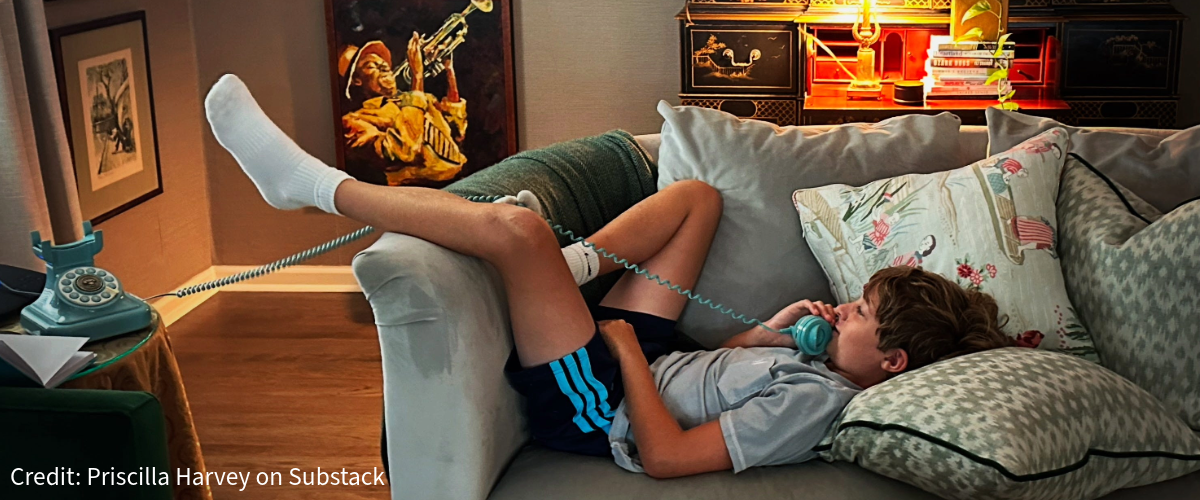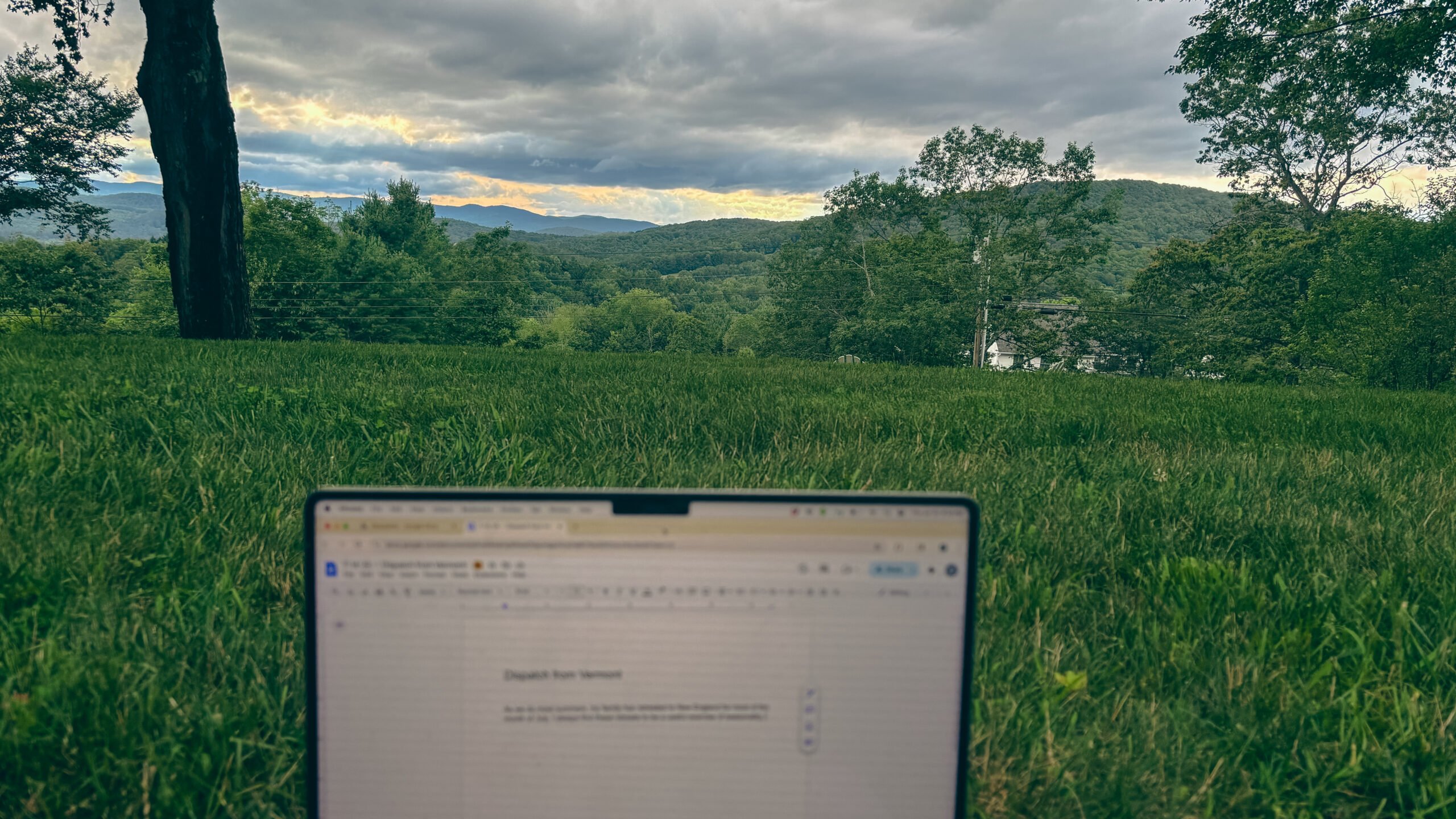A reader recently sent me a Substack post they thought I might like. “I bought my kids an old-school phone to keep smartphones out of their hands while still letting them chat with friends,” the post’s author, Priscilla Harvey, writes. “But it’s turned into the sweetest, most unexpected surprise: my son’s new daily conversations with his grandmothers.”
As Harvey continues, her son has adopted the habit of stretching out on the couch, talking to his grandmother on a retro rotary-style phone, the long cable stretching across the room. “There’s no scrolling, no distractions, no comparisons, no dopamine hits to chase,” she notes. “Instead he is just listening to stories, asking questions, and having the comfort of knowing someone who loves him is listening on the other end of the line.”
The post’s surface message is one about kids and technology. Harvey, defiantly pushed back against the culture of weary resignation surrounding our youth and phone use, and discovered something sacred.
But I think there’s a more general idea lurking here as well.








